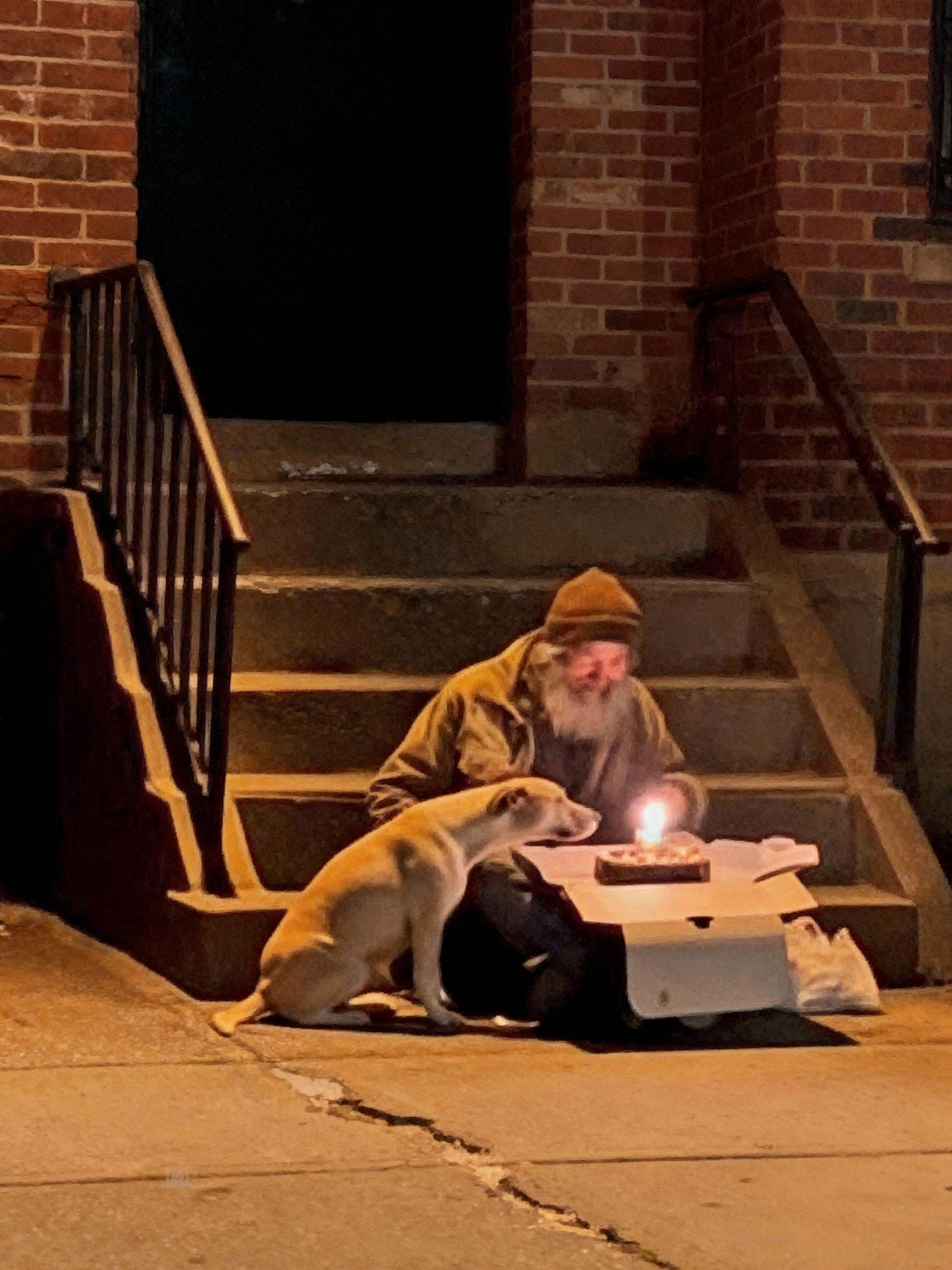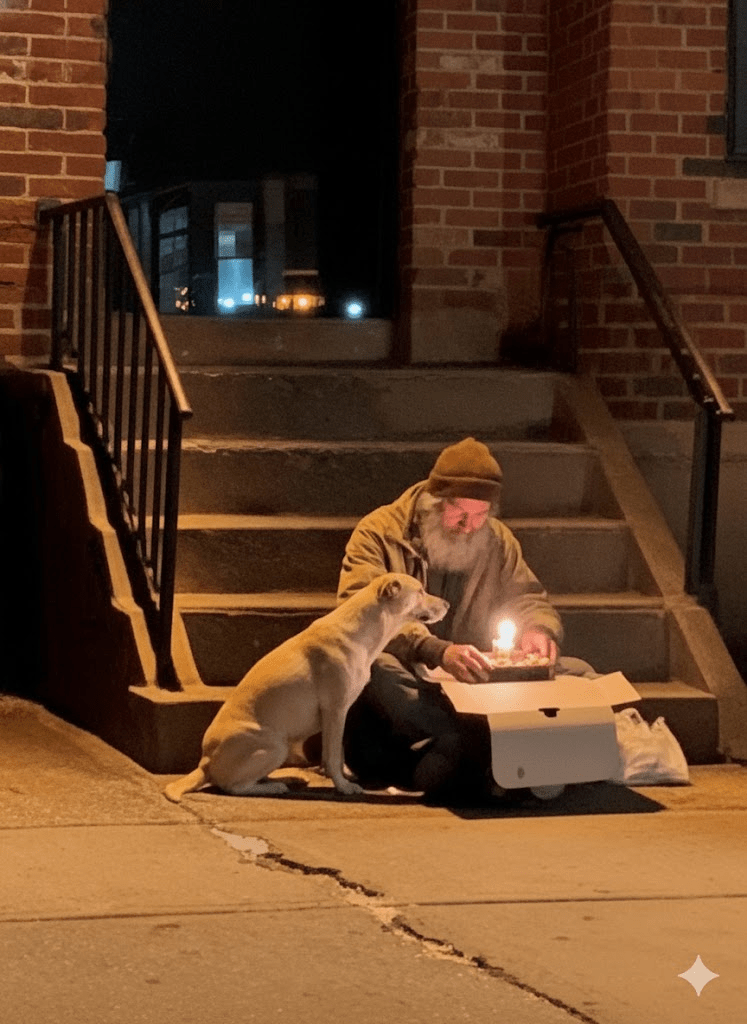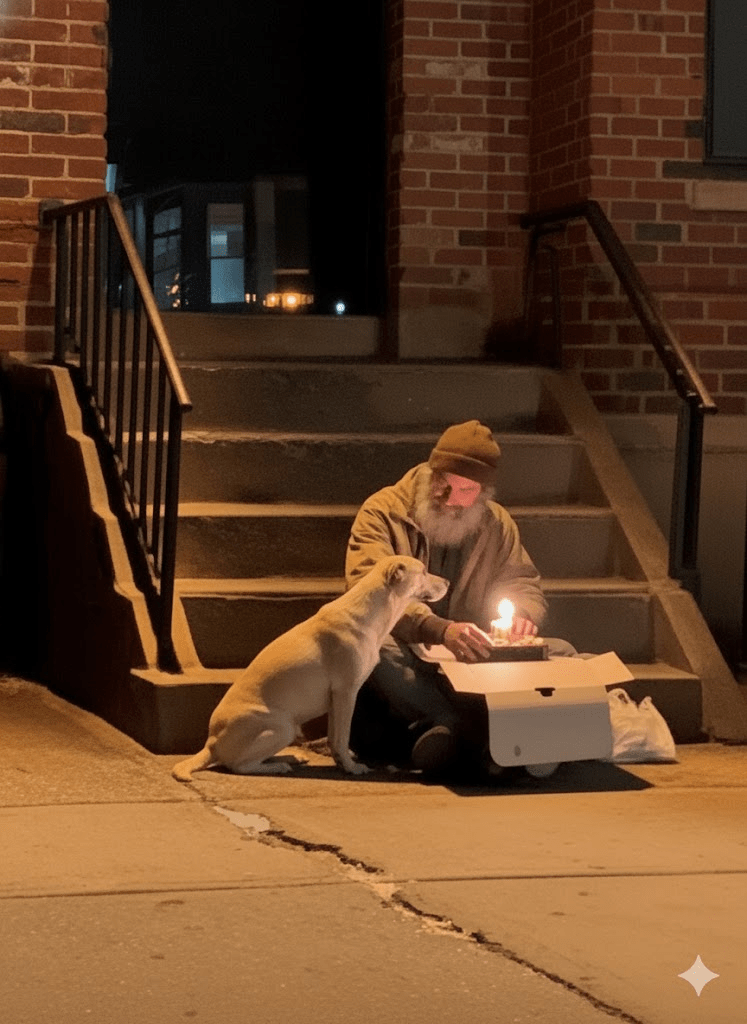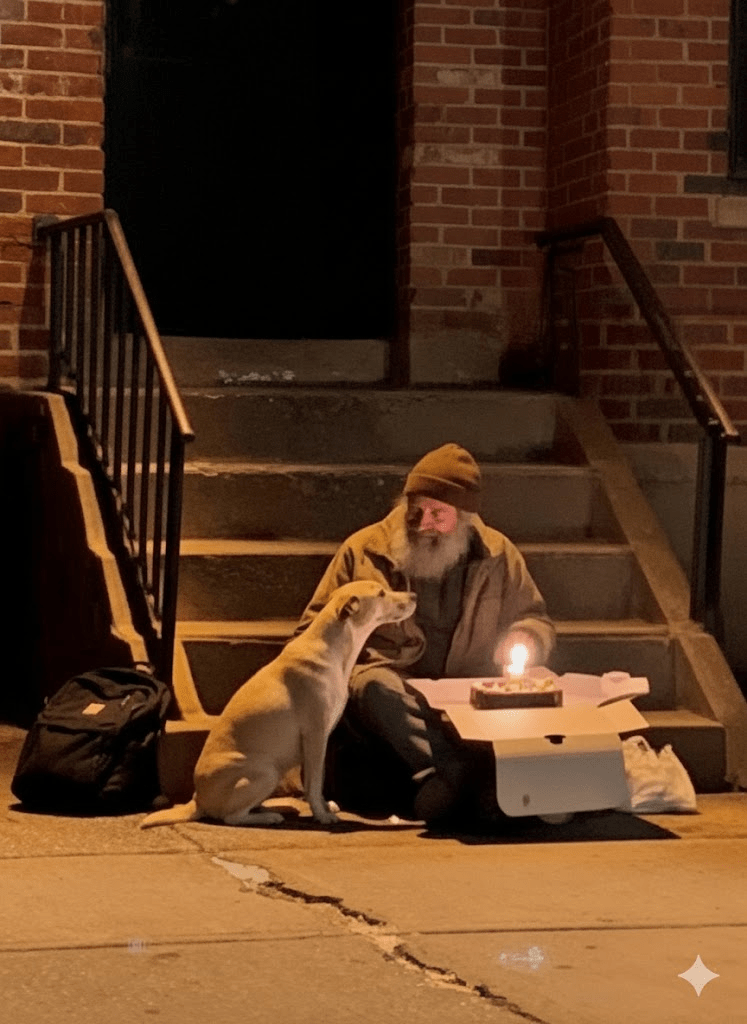In the silent, often overlooked corners of our bustling cities, life unfolds in myriad ways, each story a unique tapestry woven with threads of resilience, struggle, and unexpected joy. The accompanying image, a poignant snapshot from a quiet evening, captures such a moment – a man and his canine companion, sharing a small cake with a single flickering candle, illuminated by the soft glow of an unseen hope. This scene, seemingly simple, transcends the immediate visual to speak volumes about companionship, dignity, and the universal need for connection, even amidst challenging circumstances. It serves as a powerful reminder that humanity’s most profound expressions often occur in the most unassuming settings, away from the glare of conventional prosperity. The weathered steps of a building become a stage, and a humble cardboard box, an impromptu table for a shared celebration. This image invites us to look beyond the superficial, to delve into the depths of empathy, and to acknowledge the inherent worth and emotional landscape of every individual, regardless of their societal standing or visible markers of hardship. It is a testament to the enduring spirit that finds light in darkness and celebration in scarcity, reminding us that the truest forms of richness are often found in the bonds we forge and the simple moments we cherish.

The silent narrative of the man and his dog is a compelling portrayal of resilience. In a world often driven by material possessions and outward success, their shared moment underscores a different kind of wealth – the unwavering loyalty and comfort found in a devoted animal companion. For individuals navigating homelessness, pets are not merely companions; they are anchors, sources of unconditional love, protection, and a profound sense of purpose. This bond transcends the practicalities of survival, offering emotional sustenance that is often scarce. The dog’s attentive gaze towards the man, mirroring his quiet contemplation of the candle, speaks to a deep, unspoken understanding and mutual reliance. It highlights how these relationships can become the very fabric of daily existence, providing continuity and warmth in the face of uncertainty and isolation. This shared experience, simple yet profound, demonstrates that the human spirit, supported by such connections, possesses an extraordinary capacity to find beauty and meaning even in the most challenging environments.

The humble birthday cake, aglow with a single candle, symbolizes more than just a passing year; it represents a defiant act of celebration. In a life that often lacks routine and conventional milestones, marking an occasion like a birthday, however modestly, is an assertion of self-worth and a refusal to be forgotten. It’s a quiet testament to the enduring human desire for recognition, for moments of joy, and for the simple ritual that marks the passage of time. This small gesture, shared intimately between two beings, transforms the mundane into the meaningful. It suggests an underlying strength, a capacity to create a sense of normalcy and happiness even when external circumstances are far from ideal. The candle’s flame, small yet potent, casts long shadows, yet simultaneously illuminates the profound significance of this private ceremony, reminding us that dignity and celebration are not exclusive to affluence.

Moreover, this scene subtly challenges societal perceptions of homelessness. Often, individuals experiencing homelessness are reduced to statistics or stereotypes, stripped of their individuality and the richness of their personal stories. This image reclaims that humanity, presenting a moment of tenderness and shared intimacy that demands recognition. It forces viewers to confront the reality that behind every challenging circumstance lies a complex individual with emotions, needs, and the capacity for profound connection. The man’s focused gaze on the candle, and the dog’s gentle presence, evoke a sense of quiet grace, prompting us to look beyond immediate appearances and acknowledge the inherent dignity of all people, regardless of their housing status. It’s an invitation to see the person, not just the problem, and to understand that even on the periphery of society, life is lived with feeling and purpose.







